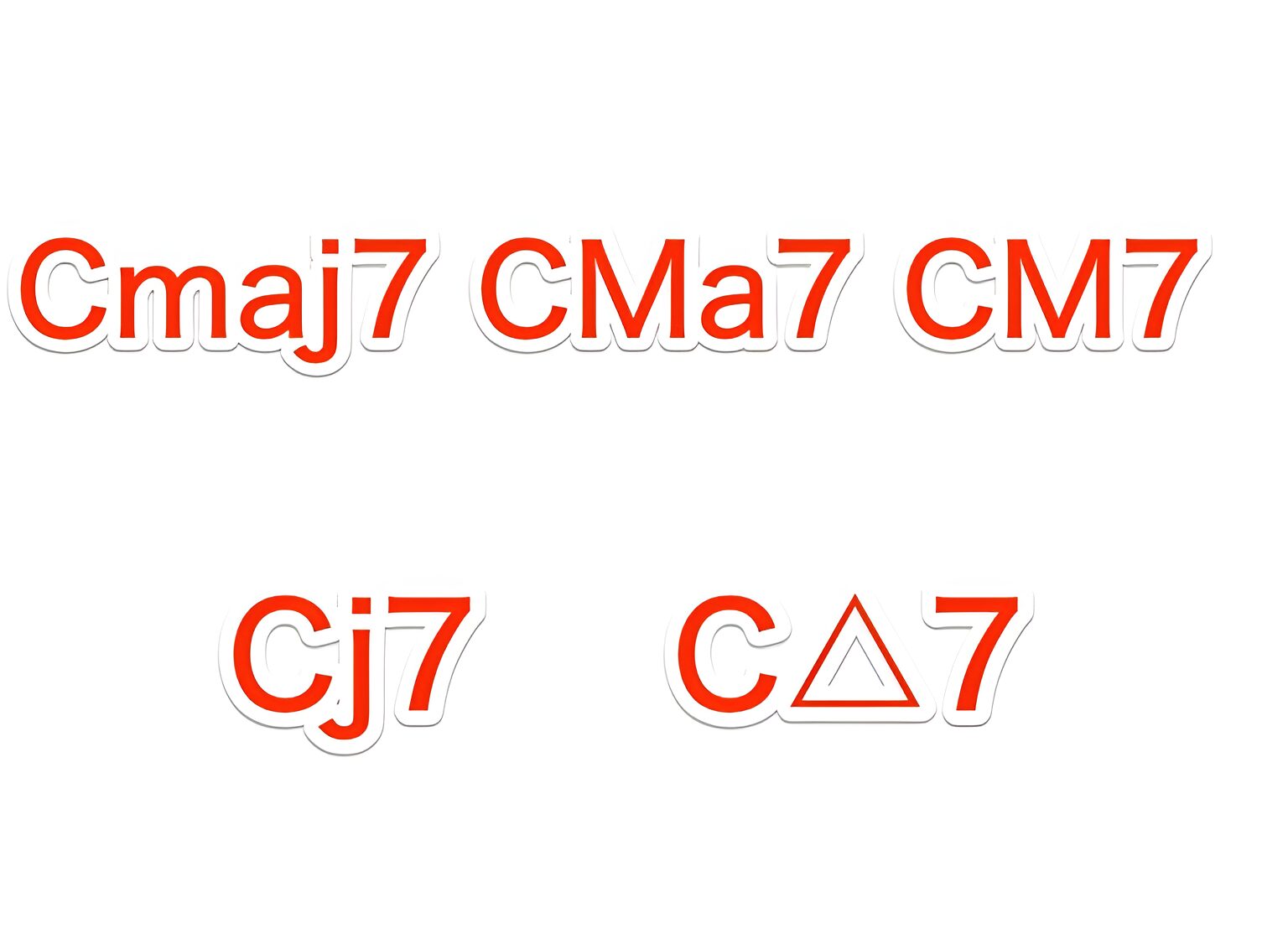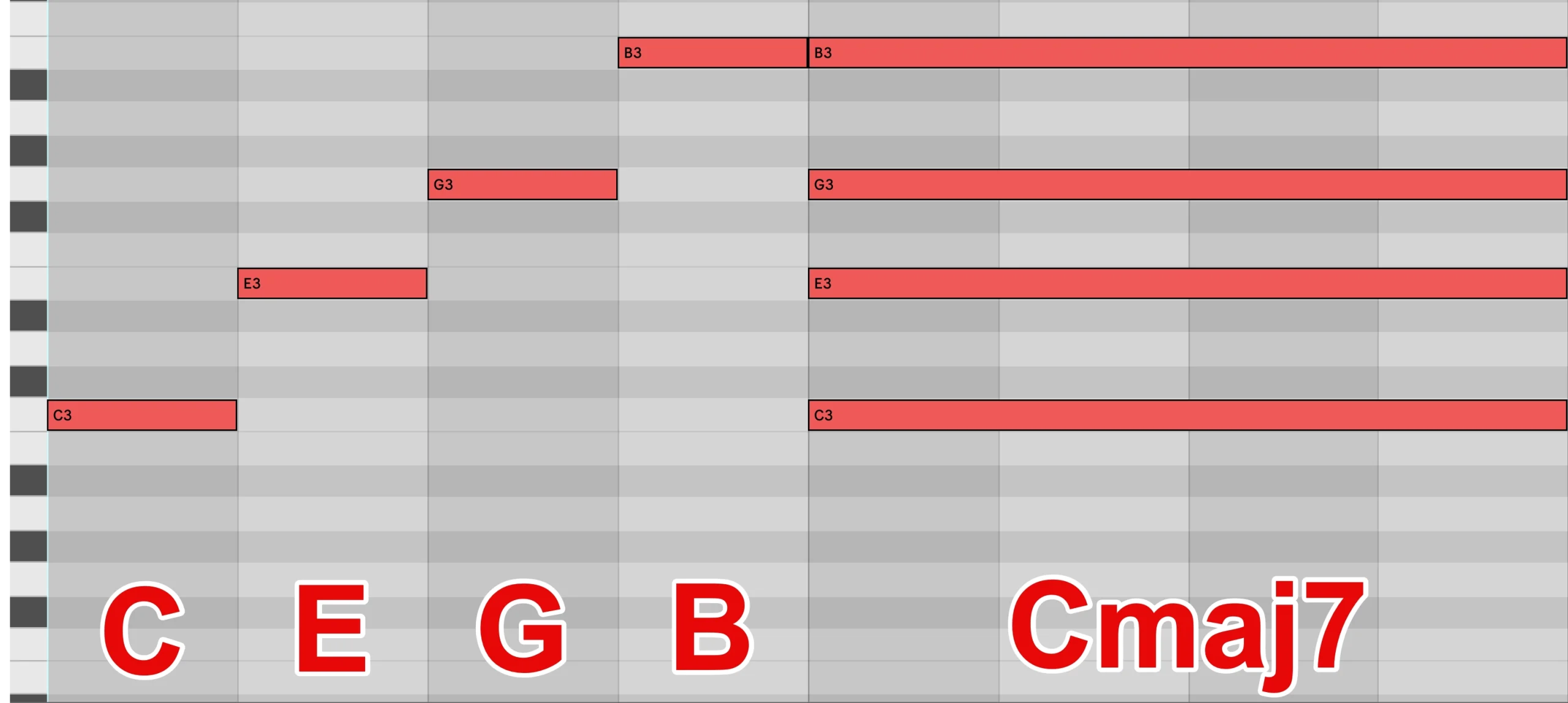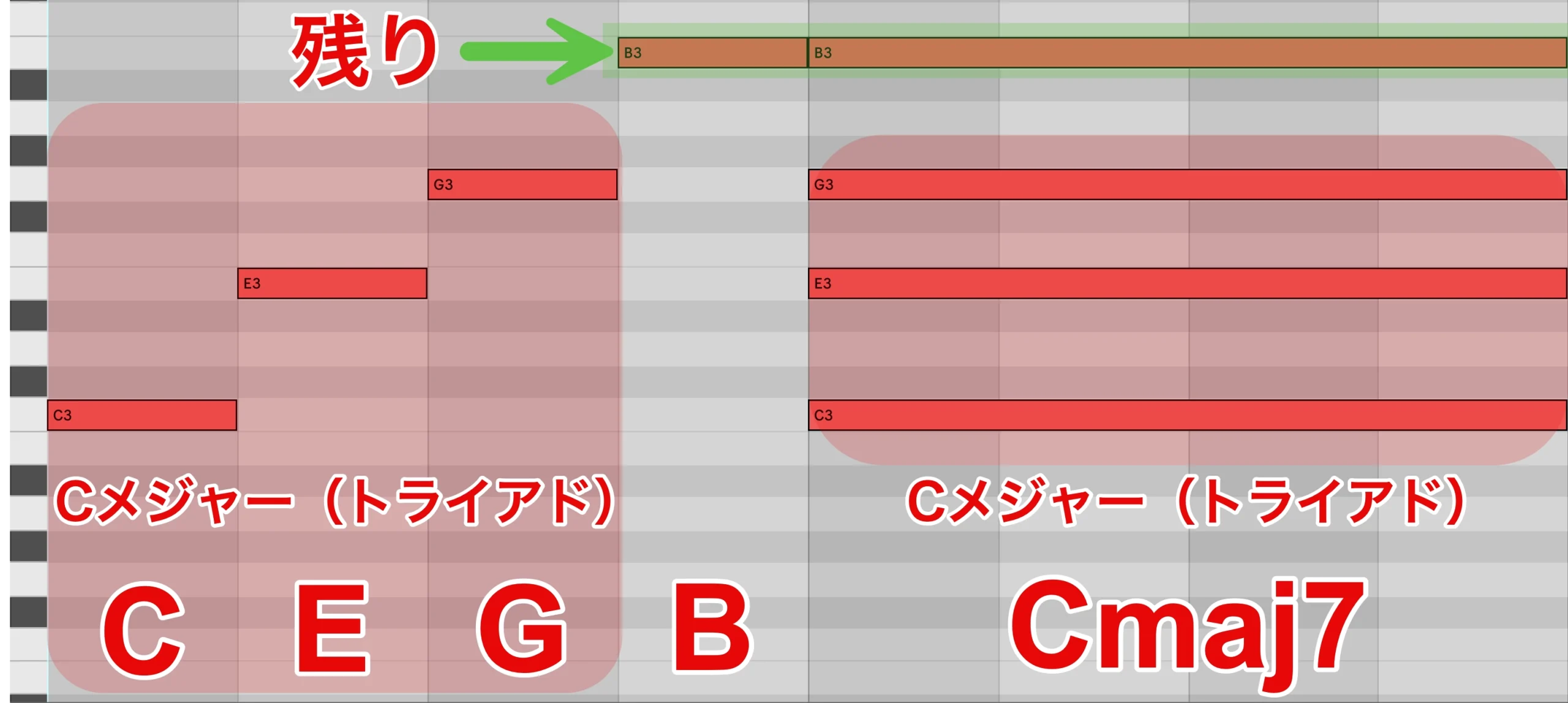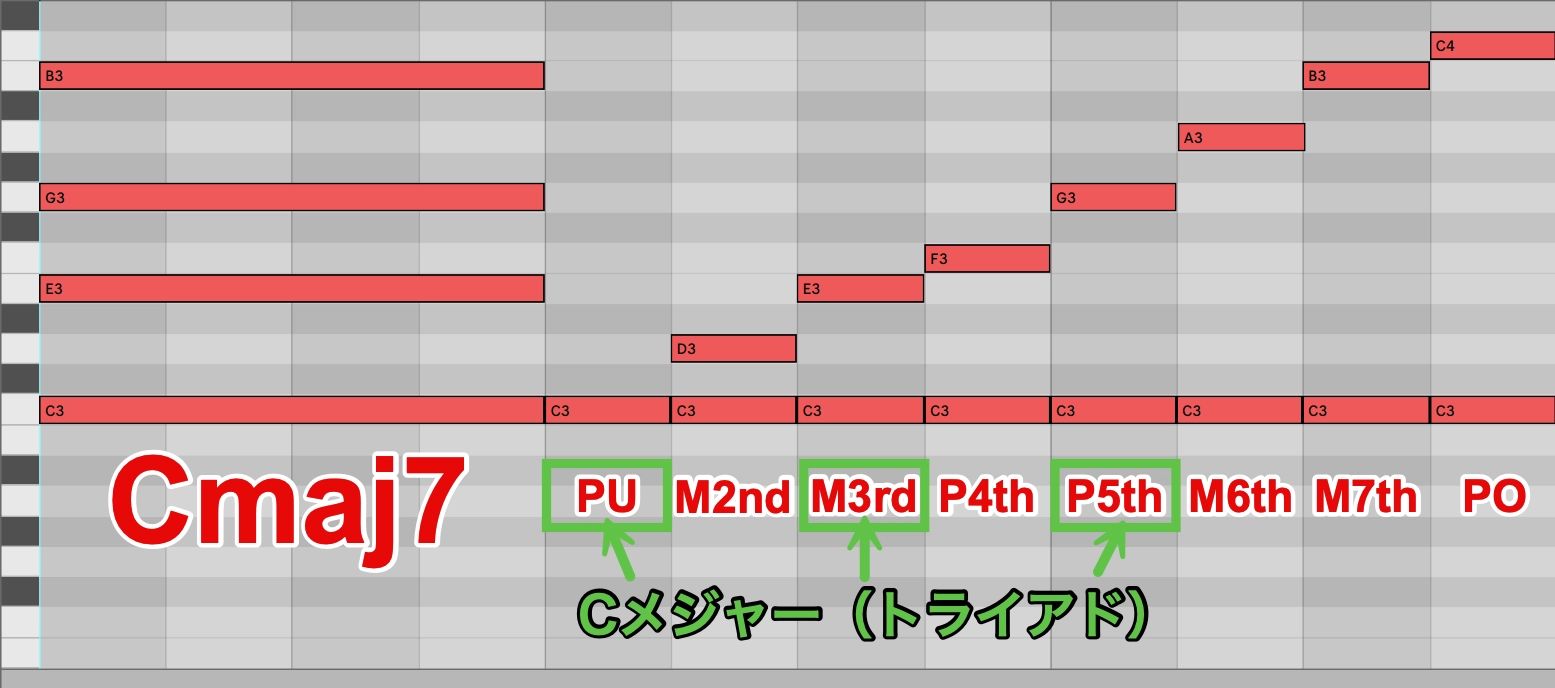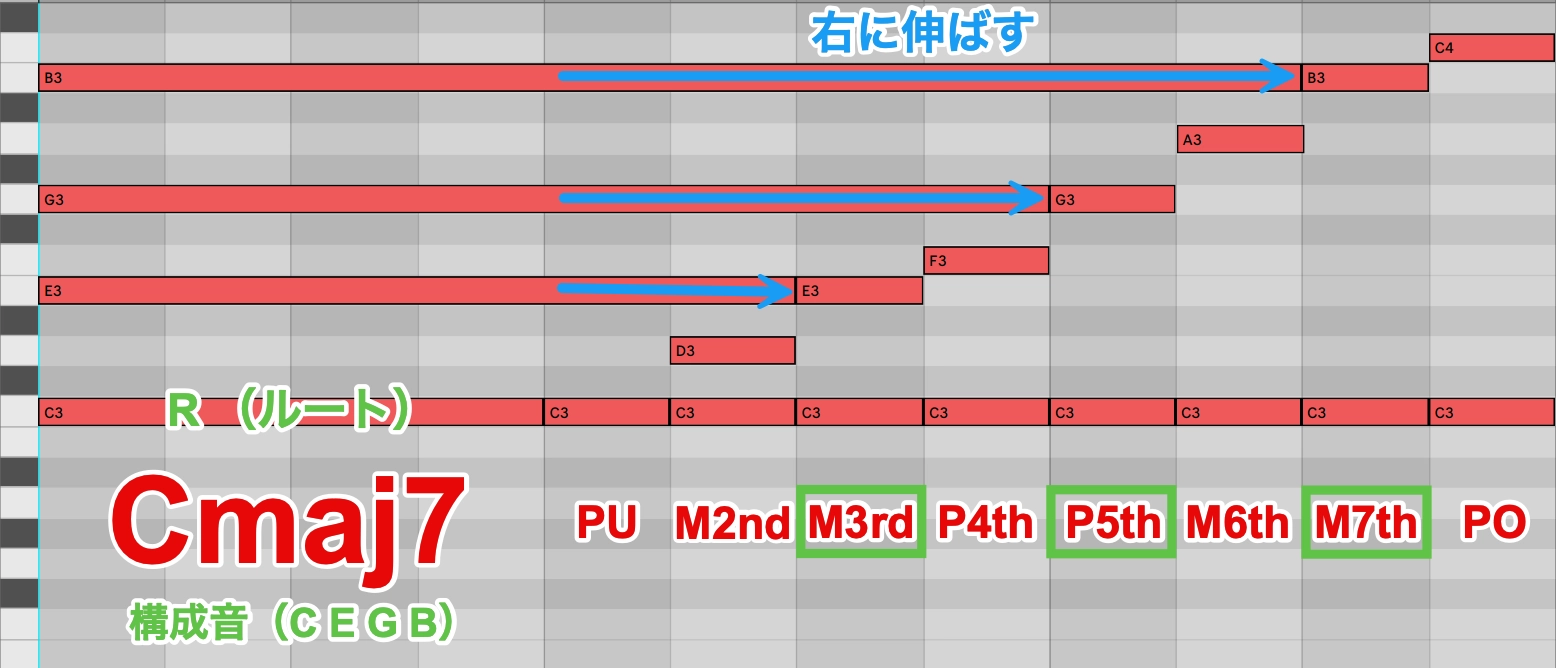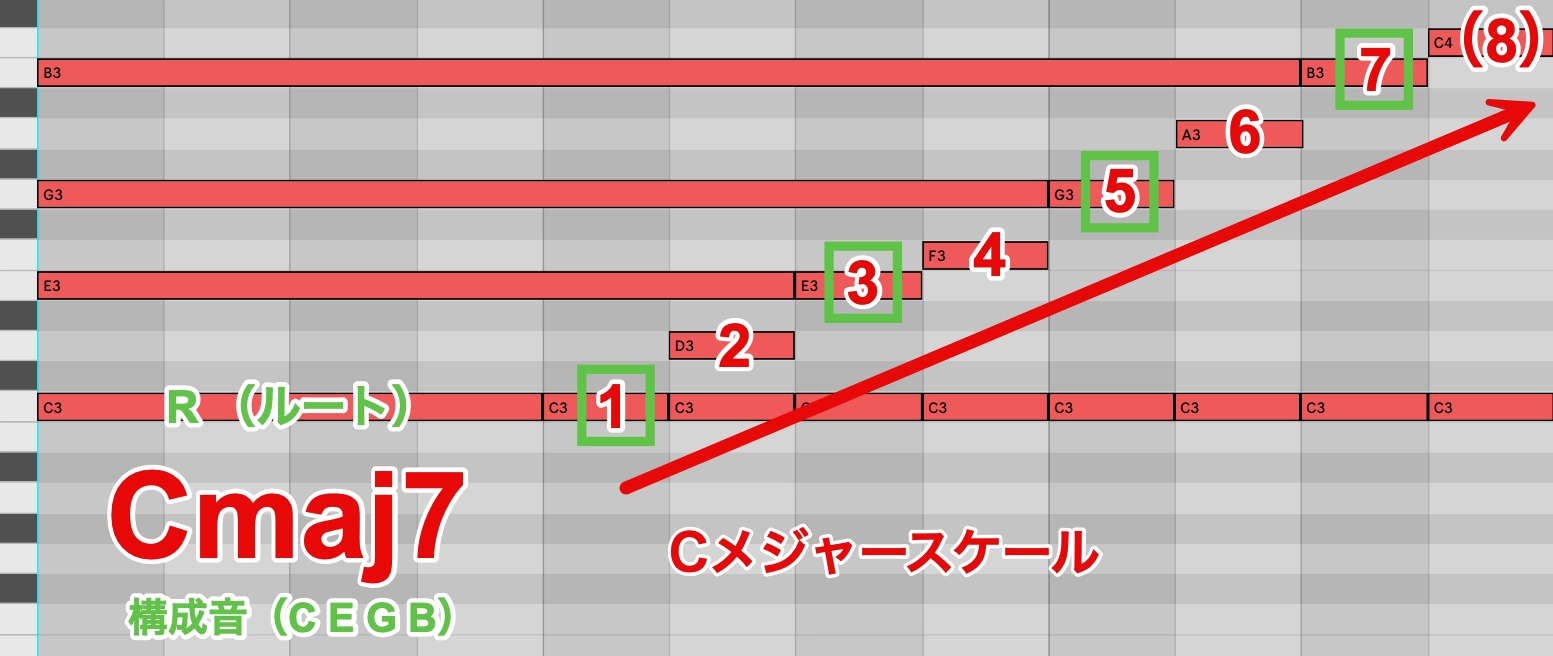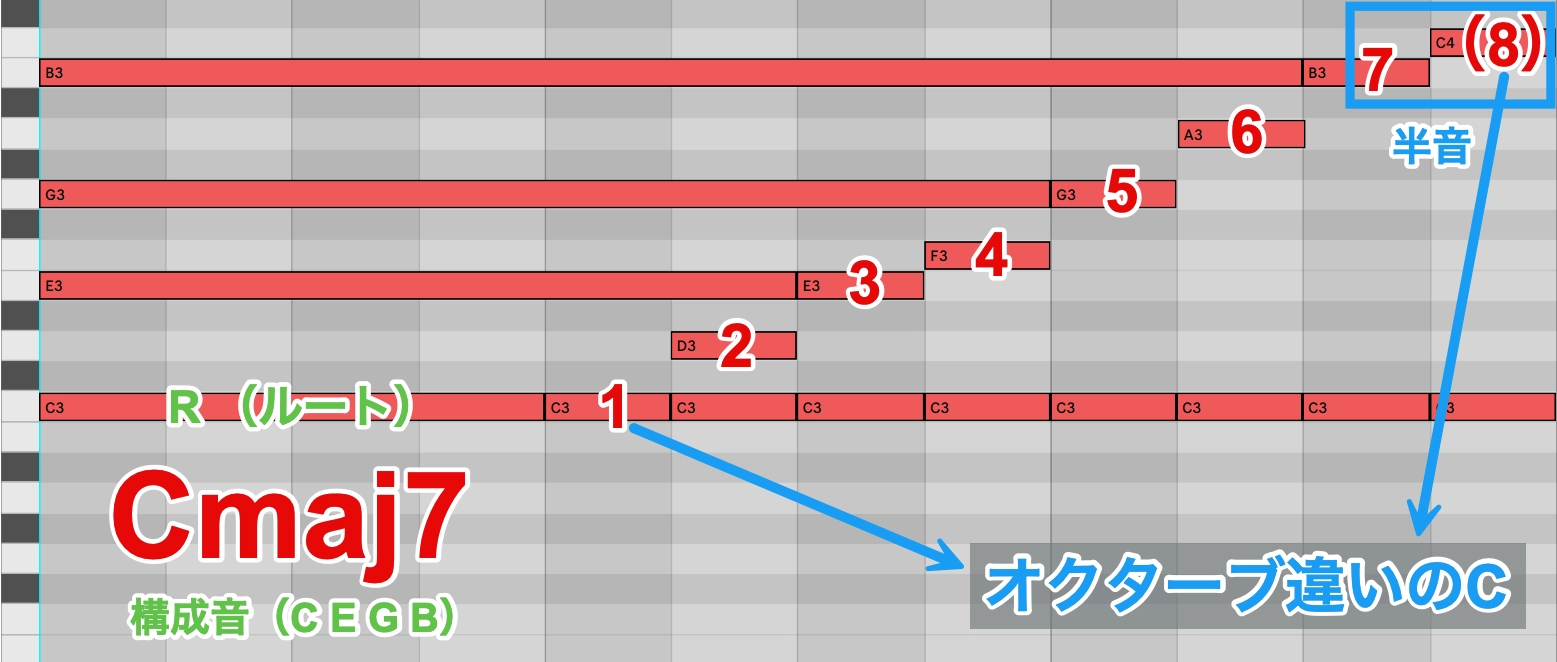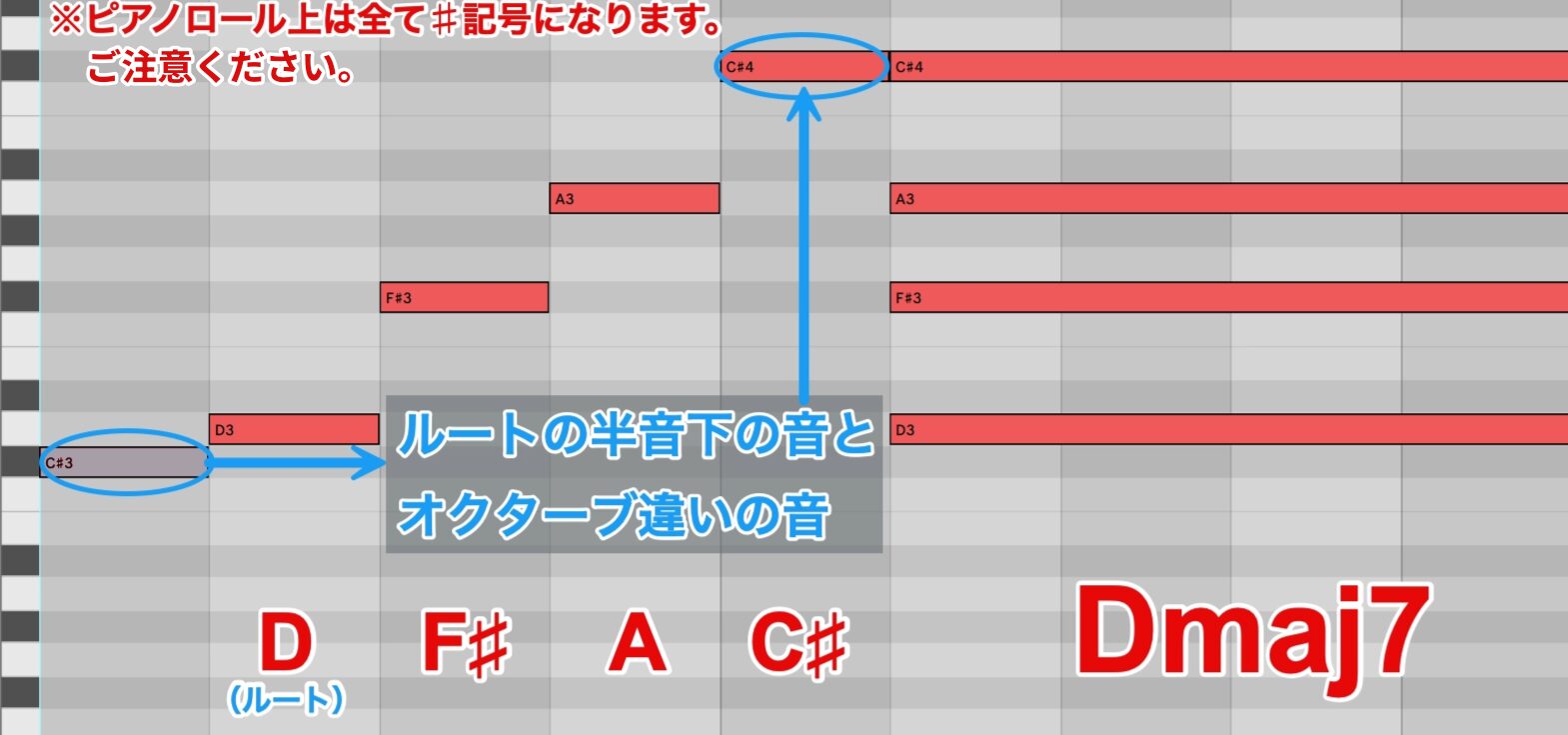四和音のコード メジャーセブンス/音楽理論講座
4和音のコードを把握する
今回は、4和音(テトラッド、セブンス)のコードについて学んでいきます。
セブンスという呼び方が、一般的なため、以降はセブンスと表記していきます。
前項まで解説している「3和音のコード」をご理解いただけていますと、この4和音のコードはすぐに作ることができます。
メジャーセブンスコード
まずは、メジャーセブンスから進めていきます。
サウンドを確認してみましょう。
コードの構成音を鳴らした後に、コードが鳴ります。
次はCメジャーコードの後に、Cメジャーセブンスを聴いてみましょう。
メジャーコードは、突き抜けた明るい印象を受けます。
それに対し、メジャーセブンスは明るさの中に切なさもある複雑な響きですね。
4和音のコードは、3和音に比べ響きが豊かで、大人っぽくお洒落な印象を受けます。
しかしながら、4和音が3和音に対し優れているということではありません。
楽曲の中で、どのように表現したいか?
これによって使い分けていくことが大切です。
メジャーセブンスコードの表記
メジャーセブンスは下記のように表記されることが多いです。
一般的な表記は以下のようなものです。
- Cメジャーセブンスなら=Cmaj7
- Dメジャーセブンスなら=Dmaj7
メジャーセブンスコードの構成音
Cメジャーセブンス(Cmaj7)を、譜面とピアノロールでそれぞれ確認してみましょう。
ここで何か気づいた点はありませんか?途中までCメジャーコードとなっていますね。
大切な部分は、既に学んでいるのです。
インターバルでの理解
お馴染みのインターバルを用意して、どのように作られているか確認してみましょう。
途中まではメジャーコードですので、R / M3rd / P5thですね。
それでは、一番上の残った音はどうでしょうか。
右に伸ばしてみましょう。
Rに、M3rd、P5th、M7thを重ねることで、メジャーセブンスコードの基本形になりました。
スケールディグリーでの理解
続いて、スケールディグリーでも見ていきましょう。
「1 3 5 7」で構成されています。
まとめると、メジャーセブンスコードの基本形は以下の通りです。
- インターバルで覚えるなら、R M3rd P5th M7th
- スケールディグリーで覚えるなら、1 3 5 7
7番目の音とルートの関係
先ほど確認したとおり、M7thはルートから7番目の音となり距離がありますね?
これにより、数え間違えてしまうこともあるでしょう。
ここで1つテクニックをご紹介します。
それは逆転の発想です。
M7thはRの音とどのような関係かに注目してみましょう。
よく考えるとM7thの音はルートの半音下のオクターブ違いの音ではありませんか?
Cメジャーセブンス(Cmaj7)の構成音の場合、BはCの半音下の音と同じBです。
この逆転の発想を使うと、メジャーセブンスの音を簡単に見つけることができます。
試しに、「Dメジャーセブンスコード」の基本形を作ってみましょう。
逆転の発想を使うと、下記のようになります。
このことを知っていれば、メジャートライアドが作れれば、メジャーセブンスコードはすぐに作り上げることができますね。
次回はこの調子で、マイナーセブンスコードを確認していきましょう。








